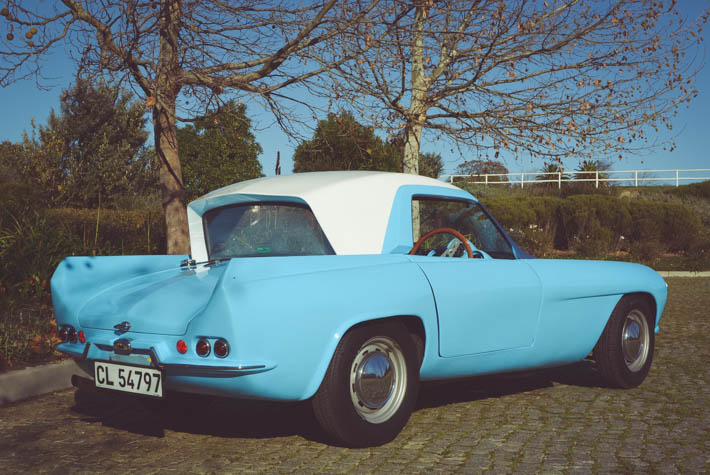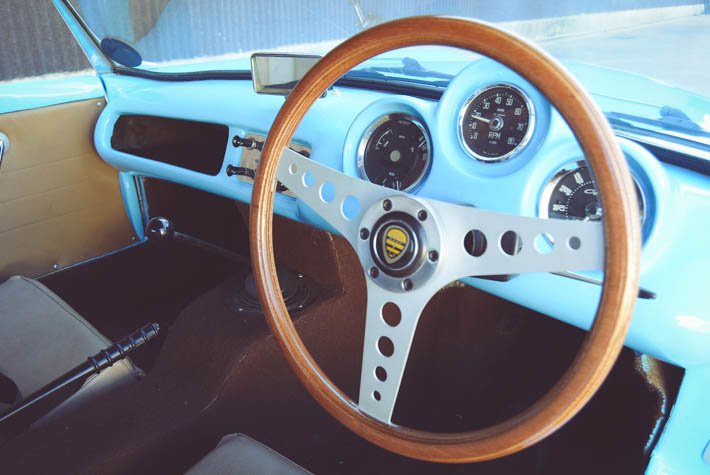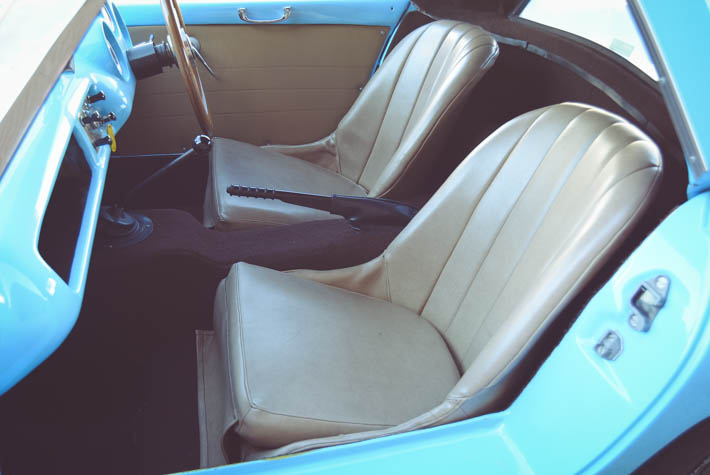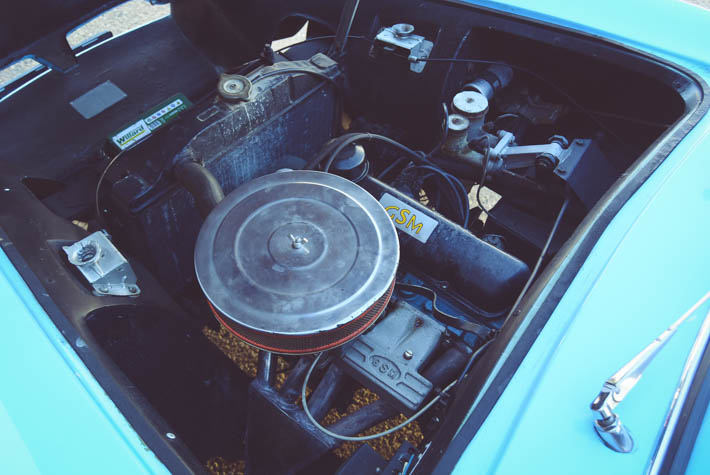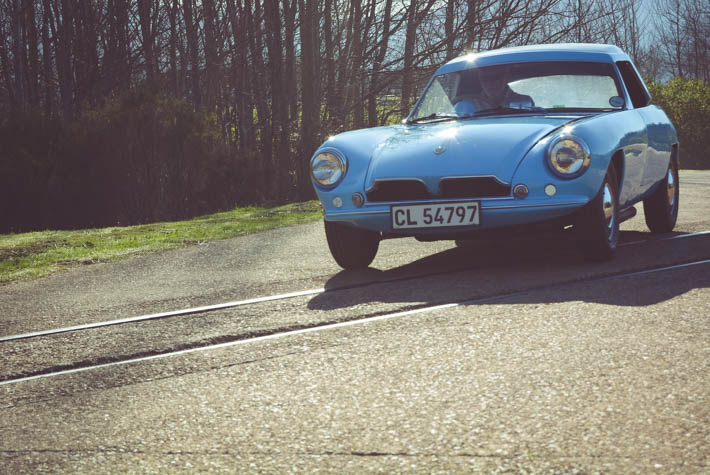
24 Jul COLLECTION IN ACTION – G
An alphabetical series of short driving impressions of some of the museum’s car collection. This month we go local and lekker in a GSM Dart.
To get straight to the point – if you will excuse the pun – the Dart has to be one of the most renowned cars ever produced in South Africa. To this day there is a remarkable number of these sportscars (and its coupé sibling, the Flamingo) still around, not just simply in existence but up and running and regularly used, thanks to the undying efforts of a vibrant enthusiasts/owners club. Having briefly driven a Flamingo a couple of years back, the Dart had eluded me up to now but when our alphabetical driving series reached G, the opportunity arose for GSM – Glassport Motor Company, the organisation behind the cars – to be the featured marque. So on a chilly winter’s morning, FMM’s sky blue Dart (thankfully with hardtop fitted) stood brighter than the heavens above awaiting my turn at the wheel. But first, it is worth (very briefly) recounting how it all began.
The full history of GSM has been well recorded in Sandy Brunette’s book ‘Dart: The Real GSM Story’ (copies are still available from FMM – see ‘On The Shelves’) but, simply put, the company was founded by three talented men, namely Bob van Niekerk, Willie Meissner and Verster de Wit. Bob was essentially the leader of the pack – certainly the driving force – and his relationship with Willie began when they were both at Stellenbosch University studying engineering. Verster became involved when he met Willie – and later, Bob – while they were all working in England and Verster’s auto design talents were enlisted to answer all three men’s desire to build a South African sports car.
The mock-up of the vehicle was made in a garage in Streatham, London and once the design was finalised, a mould was made for the body – to be built in glass fibre – which was eventually shipped to South Africa in the first half of 1957. By this time Willie was already back home, having set up a manufacturing base and being well advanced with the car’s mechanicals. Once body met rolling chassis, the Dart was born and two cars were built and took part in the False Bay 100 at Gunner’s Circle on 1 January 1958, driven by Bob and Willie. They finished 5th and 6th in the scratch race that preceded the ‘100’, in which they finished 11th and 14th competing against the likes of ex-GP single-seater racing cars. The car was introduced to the public the following month, and the rest – as they say – is not only history, it is also the stuff of legends.
Clearly then, the Dart was pretty much ‘right’ from the get-go and went on to become one of the most successful sports cars of its time, driven by many prominent racers and never failing to impress magazine road testers. But why? Well, this particular model (chassis number 25) is fitted with the early Cortina/Capri Ford 1 498 cm3 four-cylinder that delivered ‘double 85s’ – 85 bhp (63 kW) at 5 800 r/min and 85 lbf/ft (115 N.m) at 3 000 – thanks to the fitment of a Solex twin-choke carburettor and GSM-designed free-flow inlet and exhaust manifolds. Once warmed up (the car and me), I colloquially ‘put foot’ around some narrow winding roads and the reason for the Dart’s appeal soon became clear.
With a licensing mass of 617 kg, the Dart is quite light despite its fairly thick glass fibre two-seater body but the chassis layout is a classic example of the ‘simpler the better’ design philosophy. It is basic in concept but brilliant in execution, somewhat akin to Colin Chapman’s Lotuses. With the engine set well back in the frame and the cockpit sited well within the wheelbase, the car’s weight distribution is optimised to the greater benefit of handling, which is where the Dart excels. The steering is light and communicative, the ride firm but not harsh, and the handling is a dream. Stirring the four-speed gearbox, the willing motor provides busy and brisk performance. In a 1963 CAR road test, 0-60 mph (96 km/h) took 10,5 seconds and a top speed of 98 mph (158 km/h) was recorded. But is through the twisties that Dart excelled, a case of ‘catch me if you can’. And THAT is the basis of the Proudly South African GSM Dart’s legendary success. MM
